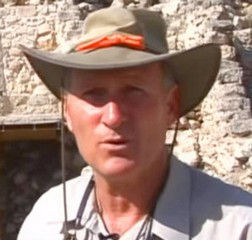Meeting Jewish Ghosts in Belarus
- Shalom Pollack

- Aug 31, 2019
- 4 min read
![Illustration: Boys In Minsk Stand Next To Zaslavskaya Memorial To The Murdered Jews by Adam Jones [CC BY-SA 2.0] via Wikimedia](https://static.wixstatic.com/media/599529_6fc4f032509342249cb33eda61842cb2~mv2.jpg/v1/fill/w_980,h_550,al_c,q_85,usm_0.66_1.00_0.01,enc_avif,quality_auto/599529_6fc4f032509342249cb33eda61842cb2~mv2.jpg)
Illustration: Boys In Minsk Stand Next To Zaslavskaya Memorial To The Murdered Jews by Adam Jones [CC BY-SA 2.0] via Wikimedia
I am at home again after having spent two weeks on the road by plane, train, bus, and foot. I visited four countries: Belarus, Lithuania, Latvia, and Estonia.
The original and main purpose of my trip was to visit the places from which my grandparents came and that they left as teenagers just after World War I and the Communist take-over. Their parents understood full well that it was time to save as many of the family as they could.
It was illegal to cross the border from what was then the U.S.S.R. to Poland, and then on to a ship in the Danzig port. Money for bribing border guards and other functionaries across a number of borders, who lorded over their little fiefdoms, was one of the main expenses in what was a very costly operation. The guide who would smuggle them to their destination was also a major expense.
Poor families used all their assets to save a member of the family from what was a bad situation clearly getting worse. No one could imagine how much worse it was to get in a few years.
My bubby (grandmother) left with her younger sister. The bumpy and dangerous wagon ride from her one-room, dirt-floor house in the tiny village of Svisloch to the city of Bobruisk took a full day — I did it in an hour by car.
She remembers how her father (her mother died when she was a child) kept waving long after the train pulled out of the station, knowing that this would be their last moment together. In 1941, the beautiful Svisloch River ran red with the blood of those left behind.
Belarus as a country — it was not really a country but had its own language and complex history — suffered greatly in the war. Twenty-five percent of the population was killed; military and civilian. Of course, the almost one million Jews did not stand a chance.
I was encouraged to learn that the Belarus population did not collaborate with the Nazis nearly as much as their neighbors in Ukraine and the Baltic countries.
My brother and I made this emotional pilgrimage to our "roots." Our guide took us to many places in this beautiful country.
However, below the beauty, wherever we went was the blood of a million Jews and a Jewish civilization that came to an abrupt and terrible end. Old Jewish cemeteries are now overgrown, with an occasional headstone peeping up from the weeds. Hebrew letters cut in stone attesting to a Jew who lived and died in this foreign land that was to be the last stop for an entire civilization. Monuments with words engraved that can never tell the story of what was.
In Soviet times, most of the monuments did not mention that masses of Jews were butchered in any particular spot. Rather, "Soviet" citizens were victims of "Fascists" in the "great patriotic war." No Holocaust. Even in their grisly deaths, the Jews were discriminated against and forcefully forgotten.
I prayed at the Chabad center. I was to experience something there that would repeat itself in the next three countries. I found that Chabad is doing holy work — if not for them, the pitiful remnants of the once vibrant Jewish community would have nowhere to go to feel Jewish. There is a school and Jewish children — though often not fully halachically Jewish — attend.
I had to wonder about this community. Surely each person has their own story and one can not judge. But clearly, there is no future for Jews in this former mass graveyard of the Jewish people. What were they planning?
Wherever I traveled, I felt the ghosts of great Jewish communities hover over the blood-drenched landscapes and alleys. In each of the four cities and Chabad centers, it seemed to me there were the same small group of elderly Russian-speaking men clinging to Chabad and each other.
These were the sad, even pathetic last witnesses to a life long gone. I wondered: Why would they not have left these places of horrible memory and trauma long ago? Again, one can not judge individuals, but as a phenomenon, it truly seems pathetic.
Another pathetic phenomena I encountered were young Israelis seeking their fortune or an easier life in these foreign lands. Clearly, these young Jews were not members of the Bnei Akiva youth movement. These are some of the products of a very secular Israeli education system and popular culture that scoffs at "too much" Jewish identity. The sad results are found in any country that offers possible material gain or the illusion of such — which is more often the case. Yes, even in lands that murdered their people. They do not connect the dots — they are not taught to. Can one judge them?
Chabad is out there in the wilderness helping the tatters of Jewish remains, while I hurry back to the one place that Jews can truly call home — and not a temporary abode, no matter how comfortable those may seem to be at any given time.
Diasporas never last forever.

Contact Shalom Pollack, veteran licensed tour guide, for upcoming tours at Shalom Pollack Tours: Personalized Tours in Israel. Join him Wednesday, September 11, for a walking tour of Jerusalem's Old City. For information and details of upcoming tours, email him here. Click here to read more of this writer’s work in The Jerusalem Herald.



































Comments